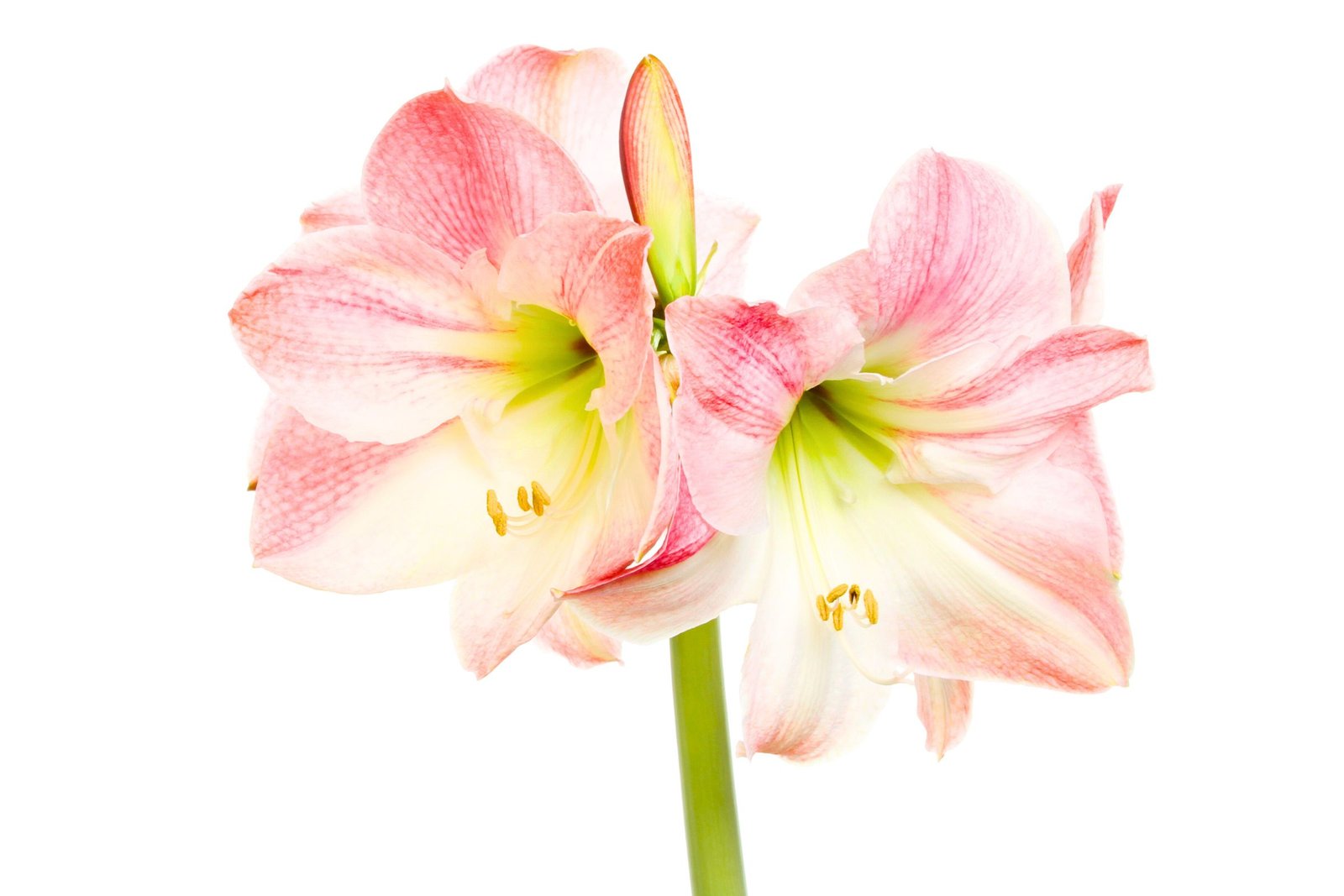In a world where aromatherapy and cozy ambiance are highly sought after, candles have become a staple in many households. However, not everyone is aware of the potential health risks associated with burning candles. In this guide, we’ll explore how to enjoy the warm glow of candles without compromising your health.
Understanding Candle Ingredients

When it comes to selecting the right candles for a healthier indoor environment, it’s essential to be discerning about the ingredients that go into their production. Not all candles are created equal, and the type of wax used can significantly impact the air quality in your home.
Paraffin Candles: Paraffin candles, a common choice due to their affordability, are made from petroleum byproducts. When burned, paraffin releases potentially harmful substances such as toluene and benzene into the air. Prolonged exposure to these pollutants can be detrimental to respiratory health, especially for individuals with pre-existing conditions.
Beeswax Candles: Beeswax, a natural substance produced by bees, offers a clean and non-toxic alternative to paraffin. Beeswax candles burn without emitting harmful chemicals, and they even release negative ions that can help purify the air by neutralizing pollutants.
Soy Wax Candles: Soy wax, derived from soybean oil, has gained popularity as an eco-friendly and sustainable option. Like beeswax, soy wax candles produce minimal soot and do not release harmful toxins into the air. Additionally, soy wax is biodegradable, making it an environmentally conscious choice.
Palm Wax Candles: Palm wax is another natural option that comes from the fruit of oil palm trees. It is known for its clean-burning properties and can be a sustainable choice when sourced responsibly. Look for candles with sustainably harvested palm wax to ensure minimal environmental impact.
Gel Candles: Gel candles are made from a combination of polymer and mineral oil. While they provide a unique visual appeal, it’s crucial to note that they can release harmful vapors when burned. Exercise caution and proper ventilation when using gel candles.
When shopping for candles, prioritize those made from natural and renewable materials like beeswax, soy wax, or sustainably sourced palm wax. These alternatives not only contribute to a cleaner burn but also support environmentally friendly practices. By understanding the composition of your candles, you can make informed choices that enhance the ambiance of your home without compromising your health or the planet.
Choose Lead-Free Wicks

The wick of a candle might seem like a small and inconspicuous component, but it plays a significant role in the safety and air quality of your candle-burning experience. Traditionally, some wicks were made with a metal core, often containing lead, to help them stand upright during burning. However, burning candles with lead-core wicks can have serious health implications.
Health Risks of Lead-Core Wicks: Lead is a toxic metal that, when burned, can release harmful lead particles into the air. Inhalation of lead fumes has been linked to a range of health issues, particularly affecting the nervous system. Children, pregnant individuals, and pets are especially vulnerable to the adverse effects of lead exposure.
Lead-Free Wicks: To mitigate these risks, it’s crucial to choose candles with lead-free wicks. Many reputable candle manufacturers have phased out the use of lead in wicks, opting for safer alternatives such as cotton or paper. When purchasing candles, check the product label or description to ensure that the wicks are explicitly labeled as lead-free.
Cotton Wicks: Cotton wicks are a popular and safe choice for candles. They burn cleanly without emitting harmful substances, and they are often braided to provide a stable flame. Cotton wicks also contribute to an even and consistent burn, enhancing the overall candle-burning experience.
Wooden Wicks: Another eco-friendly option gaining popularity is candles with wooden wicks. These wicks crackle softly as they burn, creating a pleasant ambiance. Wooden wicks are typically lead-free and contribute to a cleaner and more sustainable candle-burning practice.
Hemp Wicks: Candles with hemp wicks are yet another environmentally conscious choice. Hemp wicks are known for their slow burn and minimal soot production. Like cotton and wooden wicks, hemp wicks are lead-free, making them a safer option for health-conscious consumers.
Prioritizing candles with lead-free wicks is a proactive step in safeguarding your health and the well-being of those around you. By making informed choices and opting for candles with non-toxic wicks, you can enjoy the soothing glow of candles without compromising respiratory health.
Proper Ventilation

While the allure of a beautifully lit candle can enhance the ambiance of any room, it’s equally important to prioritize proper ventilation during candle-burning sessions. Adequate airflow not only contributes to a more enjoyable experience but also plays a crucial role in minimizing the impact of potential pollutants released during the burning process.
Ventilation Importance: Good ventilation is essential to prevent the accumulation of airborne pollutants that candles can release, such as particulate matter, volatile organic compounds (VOCs), and carbon dioxide. Proper airflow helps maintain a balance between indoor and outdoor air, reducing the concentration of these pollutants.
Air Exchange: Ensure that the room where you burn candles has good air exchange with the outdoors. Opening windows and doors periodically can help fresh air circulate, reducing the concentration of indoor pollutants. This simple practice is especially effective in larger spaces.
Impact on Indoor Air Quality: Poor indoor air quality can lead to various health issues, including respiratory irritation, headaches, and exacerbation of allergies or asthma. Maintaining proper ventilation is a proactive measure to mitigate these risks, especially in enclosed spaces where pollutants can accumulate.
Use of Fans: Ceiling fans or portable fans can aid in maintaining proper air circulation. Position fans strategically to create a gentle breeze that directs any potential candle emissions away from occupants. This helps prevent the buildup of pollutants in specific areas of the room.
Cross-Ventilation: Optimize cross-ventilation by opening windows on opposite sides of the room. This natural airflow pattern promotes the efficient removal of airborne particles and ensures a continuous supply of fresh air. Cross-ventilation is particularly beneficial for smaller spaces.
Ventilation Systems: If available, use existing HVAC (Heating, Ventilation, and Air Conditioning) systems to enhance overall air quality. Ensure that ventilation systems are well-maintained, with clean filters and adequate airflow capacity to effectively filter and remove indoor pollutants.
Avoid Overcrowding: Be mindful of overcrowding the room with too many candles, as this can overwhelm the space with pollutants. Consider using fewer candles or choosing larger candles with longer burn times to achieve the desired ambiance without compromising air quality.
Ventilation During and After Burning: Open windows or doors before lighting candles, and leave them slightly ajar during the burning process. After extinguishing the candles, continue to ventilate the room for some time to ensure any residual emissions disperse effectively.
Strategic Placement of Candles: Consider the placement of candles in relation to airflow patterns in the room. Avoid clustering candles in corners or areas with stagnant air. Placing candles in areas where there is natural air movement can aid in the dissipation of pollutants.
Ventilation During Special Occasions: During special occasions or events where multiple candles are used, be particularly vigilant about maintaining good ventilation. Increased candle usage can lead to a higher concentration of pollutants, necessitating more robust airflow strategies.
Consideration for Allergies and Sensitivities: Individuals with allergies or chemical sensitivities may benefit from enhanced ventilation practices. Minimizing exposure to candle emissions through proper airflow can be especially important for those with respiratory conditions.
By incorporating these ventilation practices into your candle-burning routine, you create a healthier indoor environment that allows you to enjoy the atmospheric benefits of candles without compromising respiratory well-being.
Trim Your Wicks

While the flickering flame of a candle can create a warm and inviting atmosphere, neglecting the importance of wick maintenance can lead to issues such as excessive soot production and uneven burning. Trimming your candle wicks is a simple yet effective practice that not only enhances the aesthetic appeal of your candles but also contributes to a cleaner and safer burning experience.
Preventing Excessive Soot: When a candle wick is too long, it can create a larger flame that burns less efficiently, resulting in the release of soot. Soot consists of tiny, airborne particles that can tarnish surfaces and, when inhaled, pose potential health risks. Trimming the wick to around 1/4 inch before each use minimizes the chances of excessive soot production.
Ensuring Even Burning: A properly trimmed wick promotes an even and controlled burn. Wicks that are too long may cause the candle to burn unevenly, forming craters in the wax and potentially extinguishing the flame. Uneven burning not only affects the aesthetics of the candle but also reduces its overall lifespan.
Use of Wick Trimmers: Invest in wick trimmers, a specialized tool designed for easily and cleanly trimming candle wicks. These trimmers are equipped with a long handle and a curved base, allowing you to reach into jar candles or pillars and snip the wick without creating a mess. Regularly using wick trimmers ensures a precise and uniform cut.
Timing of Trimming: Trim the wick just before lighting the candle. This practice prevents loose debris and trimmed wick remnants from falling into the wax, ensuring a clean and unobstructed burn. It’s a quick step that significantly contributes to the overall candle-burning experience.
Regular Maintenance Routine: Make wick trimming a part of your regular candle maintenance routine. Whether you light candles daily or occasionally, a consistent trimming schedule helps maintain optimal burning conditions. It’s a small effort that pays off in the form of a longer-lasting, cleaner, and safer candle.
Safety Considerations: Proper wick trimming is not just about aesthetics; it’s also a safety measure. Long wicks can flare up unexpectedly, increasing the risk of fire hazards. By keeping the wick at a manageable length, you reduce the likelihood of accidents and ensure a controlled flame.
By incorporating this straightforward yet essential practice into your candle-burning routine, you not only enhance the visual appeal of your candles but also contribute to a safer and more enjoyable experience.
Be Mindful of Candle Additives

The allure of scented candles can be captivating, but it’s crucial to exercise caution when choosing candles with additives. Many commercially available candles contain dyes and fragrances, some of which may include phthalates. Being mindful of these additives is essential, as they can release harmful chemicals when burned, impacting both air quality and personal health.
Phthalates in Fragrances: Phthalates are chemicals commonly used to enhance the scent in candles. However, when heated, phthalates can be released into the air and may pose health risks. Research suggests that exposure to certain phthalates is associated with respiratory issues and can potentially disrupt the endocrine system.
Dyes and Pigments: Colored candles often contain dyes and pigments to achieve vibrant hues. While these additives may enhance the visual appeal of the candle, burning them can release additional chemicals into the air. Opting for candles without artificial colorants minimizes the potential health risks associated with inhaling these substances.
Unscented Candles: If you’re concerned about potential health risks associated with fragrance additives, consider using unscented candles. Unscented candles offer the ambiance of candlelight without introducing additional chemicals into the air. They are an excellent choice for individuals with sensitivities or allergies.
Naturally Scented Candles: For those who enjoy scented candles, opt for varieties that use natural sources for their fragrances. Essential oils extracted from plants provide a natural and aromatic alternative to synthetic fragrances. Natural scents not only contribute to a healthier indoor environment but also offer a more authentic and nuanced fragrance experience.
Label Scrutiny: Before purchasing candles, scrutinize the product labels. Look for clear indications that the candle is free from phthalates, synthetic fragrances, and artificial dyes. Many responsible manufacturers provide this information to help consumers make informed choices.
DIY Candle Making: For complete control over the ingredients, consider making your own candles. DIY candle-making allows you to choose natural waxes, essential oils, and avoid any additives that may compromise air quality. There are various resources and kits available for those interested in crafting their own candles.
Ventilation Considerations: If you choose scented candles, ensure good ventilation during burning to minimize the concentration of released substances. This is especially important in smaller spaces where pollutants can accumulate more rapidly.
By being mindful of candle additives and opting for cleaner alternatives, you can enjoy the ambiance of candles without compromising your indoor air quality or exposing yourself to potentially harmful chemicals.
Use Candle Holders Wisely

While candles are a source of warmth and ambiance, it’s crucial to use them safely by employing suitable candle holders. Proper placement in sturdy, non-combustible holders not only prevents accidental fires but also ensures a more controlled and even burn, enhancing both the safety and aesthetics of your candle-lit spaces.
Sturdy and Non-Combustible Materials: Choose candle holders made from materials that are both sturdy and non-combustible. Options include metal, glass, ceramic, or stone. Avoid holders made of flammable materials like wood or plastic, as they pose a higher risk of catching fire.
Stability and Balance: Select candle holders that provide stability and balance. Ensure that the base of the holder is wide enough to support the candle securely, reducing the risk of tipping over. Unstable candle placement can lead to accidents, especially in households with pets or children.
Adequate Size and Depth: The holder should be appropriately sized to accommodate the specific type and size of the candle. The candle should fit snugly within the holder, with enough depth to prevent wax from overflowing as it melts. This prevents accidental spills and promotes a cleaner burning experience.
Protective Surroundings: Place candles in holders that have a protective barrier or cover to prevent drafts or accidental contact with flammable materials. This is especially important for outdoor candles or those in areas with air circulation, as it helps maintain a controlled flame.
Consider Candle Type: Different candles may require different holders. For example, pillar candles often work well in holders with a wider base, while taper candles may be better suited for holders with a snug fit. Be mindful of the type of candle you’re using and choose a holder that complements it.
Regular Inspection: Periodically inspect your candle holders for any signs of wear or damage. Cracks or weaknesses in the holder can compromise its ability to support the candle safely. Replace damaged holders promptly to maintain a secure and hazard-free environment.
Grouping Candles: If using multiple candles in a group or arrangement, ensure they are spaced appropriately to prevent heat transfer. Overcrowding can lead to uneven burning and increase the risk of accidents. Consider using holders designed for multiple candles or place them strategically for optimal safety.
Proximity to Flammable Objects: Keep candles at a safe distance from curtains, tablecloths, and other flammable objects. The heat emitted can pose a fire hazard, and maintaining adequate space reduces the risk of accidental ignition.
By using candle holders wisely and incorporating these safety measures, you can enjoy the beauty of candlelight without compromising on safety. Responsible candle placement not only prevents accidents but also contributes to a more enjoyable and worry-free candle-burning experience.
Time Limits for Burning

While the warm glow of candles can create a cozy atmosphere, it’s essential to be mindful of the duration for which you burn them. Setting time limits on candle-burning sessions helps mitigate the accumulation of indoor pollutants, ensuring a safer and healthier environment. Extended burning times can increase exposure to potentially harmful substances released during combustion.
Indoor Air Quality Concerns: Burning candles releases various substances into the air, including particulate matter, volatile organic compounds (VOCs), and other byproducts. Over time, these pollutants can accumulate, potentially compromising indoor air quality. Limiting the duration of burning sessions helps manage and minimize this buildup.
Shorter Sessions for Intermittent Use: If you enjoy candles for brief periods, such as during meals or relaxation sessions, consider shorter burning sessions. This approach allows you to enjoy the ambiance without prolonged exposure to candle emissions.
Ventilation During and After Burning: Ensure proper ventilation during and after burning candles. Open windows or doors to facilitate the exchange of indoor and outdoor air, helping to disperse pollutants. This practice is particularly crucial when burning candles in confined spaces.
Consider Candle Size: Larger candles typically have longer burn times. If using sizable candles, be especially mindful of the duration for which they are lit. Consider dividing longer burning candles into multiple sessions to minimize continuous exposure.
Use of Tea Lights or Votives: If you prefer the constant presence of candlelight, consider using smaller candles like tea lights or votives. These candles have shorter burn times and can be easily replaced, reducing the overall exposure to candle emissions.
Candle Burning in Bedrooms: In bedrooms, where people spend a significant amount of time sleeping, it’s advisable to extinguish candles before bedtime. Prolonged exposure to candle emissions during sleep may have potential health implications, especially for individuals with respiratory sensitivities.
Mindful Occasional Use: Reserve longer burning sessions for special occasions and events. If you plan to have candles burning for an extended period, ensure proper ventilation and be attentive to the potential buildup of pollutants.
Educate Household Members: Ensure that all members of the household are aware of the recommended time limits for burning candles. This collective awareness promotes responsible candle use and contributes to maintaining a healthier living environment.
By incorporating these guidelines into your candle-burning routine, you can strike a balance between enjoying the ambiance of candles and mitigating potential health risks associated with prolonged exposure to indoor pollutants.
Monitor Candle Placement

The placement of candles within your living space is a crucial aspect of ensuring both safety and a controlled burning environment. By strategically positioning candles away from potential hazards, you minimize the risk of accidents and create a safer atmosphere. Here are essential considerations for monitoring candle placement.
Draft-Free Zones: Position candles away from drafty areas, such as open windows, doorways, or vents. Drafts can cause candles to flicker unevenly, increasing the risk of the flame coming into contact with nearby objects. Placing candles in draft-free zones promotes a stable and controlled burn.
Keep Candles Clear of Curtains: Avoid placing candles near curtains, blinds, or any other hanging fabrics. The heat generated by the flame can pose a fire hazard, especially if the curtains are lightweight or easily flammable. Maintain a safe distance to prevent accidental ignition.
Mindful of Flammable Materials: Be conscious of the proximity of candles to flammable materials such as paper, books, decorations, or any other combustible items. Ensure a minimum clearance around the candle to prevent accidental contact or ignition. Creating a buffer zone reduces the risk of fire hazards.
Sturdy Candle Holders: Use sturdy candle holders made of non-combustible materials. A stable holder minimizes the likelihood of the candle tipping over, especially in households with pets or children. This precaution adds an extra layer of safety to your candle-burning environment.
Avoid High-Traffic Areas: Refrain from placing candles in high-traffic areas where they may be easily bumped or knocked over. Consider the flow of movement within the room and position candles where they are less likely to be disturbed.
Maintain Adequate Space Between Candles: When using multiple candles, ensure sufficient space between them. Overcrowding can lead to an increased risk of accidents, especially if candles are burning close to one another. Maintain a safe distance to prevent unintentional contact or flames merging.
Monitor Pets and Children: Be aware of the presence and behavior of pets and children around candles. Pets, in particular, may be curious about the flames, and children may unintentionally knock over candles. Keep candles out of their reach and educate family members about the importance of candle safety.
Consider Environmental Factors: Factor in environmental conditions such as humidity and temperature. Extremely dry conditions can enhance the flammability of surrounding materials, making it important to be extra cautious with candle placement during such periods.
Extinguish Before Leaving the Room: Always extinguish candles before leaving a room or going to sleep. This simple practice ensures that candles are not left unattended, reducing the risk of accidents in your absence.
By monitoring the placement of candles in your living space and adhering to these safety guidelines, you can enjoy the warmth and ambiance of candlelight without compromising the safety of your home.
Extinguish Candles Safely

Ensuring the safe and proper extinguishing of candles is a critical practice that contributes to both fire safety and a controlled burning environment. By following these guidelines, you can enjoy the benefits of candlelight without compromising the well-being of your home and those within it.
Before Leaving the Room: Always extinguish candles before leaving a room, even if it’s just for a short period. Unattended candles pose a potential fire hazard, and extinguishing them mitigates the risk of accidents in your absence.
Before Going to Sleep: It is paramount to extinguish all candles before going to sleep. Falling asleep with candles burning can lead to unforeseen dangers, and the potential for accidents significantly increases when no one is awake to monitor them.
Avoid Excessive Smoke: Consider using a candle snuffer to extinguish the flame. Snuffers are designed to put out candles without generating excess smoke, which can be a concern, especially with larger candles. This practice not only contributes to a cleaner environment but also minimizes respiratory exposure to smoke.
Snuffer Usage: To use a snuffer, gently place the snuffing end over the flame without touching the wick. Allow a few seconds for the snuffer to cut off the oxygen supply to the flame, extinguishing it smoothly. Lift the snuffer away slowly to avoid any disturbance of the wick or wax.
Avoid Blowing Out Candles: While blowing out candles is a common method, it can lead to excess smoke and the potential for hot wax to splatter. Using a snuffer is a more controlled method that reduces these risks and helps maintain a cleaner burning environment.
Trim Wick After Extinguishing: After extinguishing the candle, consider trimming the wick to about 1/4 inch. This practice prepares the candle for the next use and helps prevent issues such as excessive soot production and uneven burning during subsequent sessions.
Use Candle Caps: Some candles come with caps or lids that can be used to extinguish the flame. Placing the cap over the candle suffocates the flame, minimizing smoke and preventing dust or debris from settling into the wax.
Check for Ember Glow: After extinguishing the candle, check for any residual ember glow. Ensure that the wick is completely out and that there are no smoldering embers that could potentially reignite. This additional step enhances safety measures.
By incorporating these practices into your candle-burning routine, you not only prioritize the safety of your home but also contribute to a more enjoyable and worry-free candle-lit environment.
Conclusion
Enjoying the warm glow and ambiance of candles can be a delightful experience when approached with mindfulness and safety in mind. By adopting responsible candle-burning practices, you not only enhance the aesthetic appeal of your living space but also safeguard the well-being of your home and its occupants.
From choosing candles made with natural ingredients to being vigilant about wick maintenance, ventilation, and proper placement, each step contributes to a cleaner, safer, and more enjoyable candle-lit environment. Prioritizing safety measures such as extinguishing candles before leaving a room or going to sleep, using snuffers to minimize excess smoke, and being aware of potential fire hazards ensures a controlled burning experience.
Ultimately, the key to reaping the benefits of candles lies in balancing the desire for ambiance with a commitment to safety. Whether you are using candles for relaxation, decoration, or special occasions, integrating these practices into your routine will allow you to create a welcoming atmosphere while minimizing the associated health and safety risks. Enjoy the flickering glow responsibly, and let the candles illuminate your space with both warmth and well-being.








